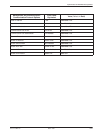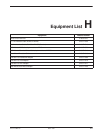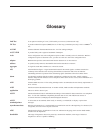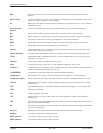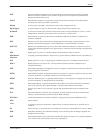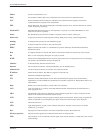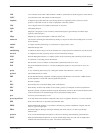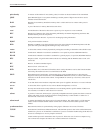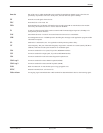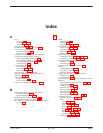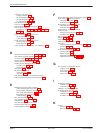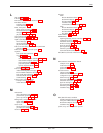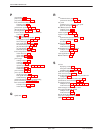
Glossary
Glossary-53163-A2-GB20-10 March 1999
Loss of Frame. Occurs when a DS1 terminal is unable to synchronize on the DS1 signal for some interval.
Loss Of Frame Count. The number of LOFs declared.
A diagnostic procedure that sends a test message back to its origination point. Used to test various
portions of a data link in order to isolate an equipment or data line problem.
Loss of Signal. The T1 line condition where there are no pulses.
Link Quality Reports.
Megabyte or megabytes. A unit of memory measurement equal to approximately one million bytes
(typically 1,048,576 bytes).
Megabits per second. One megabit is 1,048,576 (1024
2
) bits.
The structure containing the menu hierarchy starting at a Top-Level menu and extending down to various
device functions.
A compact assembly functioning as a component in a larger system or unit.
Maximum Request Unit.
A method for interleaving several access channels onto a single circuit for transmission over the network.
A configuration of data processing devices used for information exchange.
Network Management System. A computer system used for monitoring and controlling network devices.
A connection or switching point on the network.
Out Of Frame. An error condition in which frame synchronization bits are in error.
Password Authentication Protocol. A security technique that requires a user password for access to a
system.
A way of checking data accuracy by counting the number of bits that have a value of one.
The information bits in a frame.
Private Branch Exchange. Telephone switching equipment dedicated to one customer. A PBX connects
private telephones to each other and to the public dial network.
Personal Computer.
Protocol Data Unit. Used when adding routes in the Internet.
Pulse Density Violation. The number of ones (marks, pulses) is not adequate for the line requirement.
Payload Loopback. Loopback mode that loops the information received on the T1 network interface back
to the network after it has passed through receive and transmit framing section.
An access point for data entry or exit.
A test that checks most hardware components when power is applied to the device or a reset is initiated.
Point-to-Point Protocol, as specified by Internet RFC 1661.
Pseudo-Random Bit Sequence. A test pattern containing any possible combination of digital ones and
zeros for a given string length.
Performance Report Messages. Messages indicating the current state of a T1 line as specified by
ANSI-T1-403.
A set of rules that determines the behavior of devices in achieving and maintaining communication.
Public Switched Telephone Network. A network shared among many users who can use telephones to
establish connections between two points. Also known as dial network.
LOF
LOFC
loopback
LOS
LQR
MB
Mbps
menu tree
module
MRU
multiplexing
network
NMS
node
OOF
PAP
parity
payload
PBX
PC
PDU
PDV
PLB
port
power-up self-test
PPP
PRBS
PRM
protocol
PSTN



